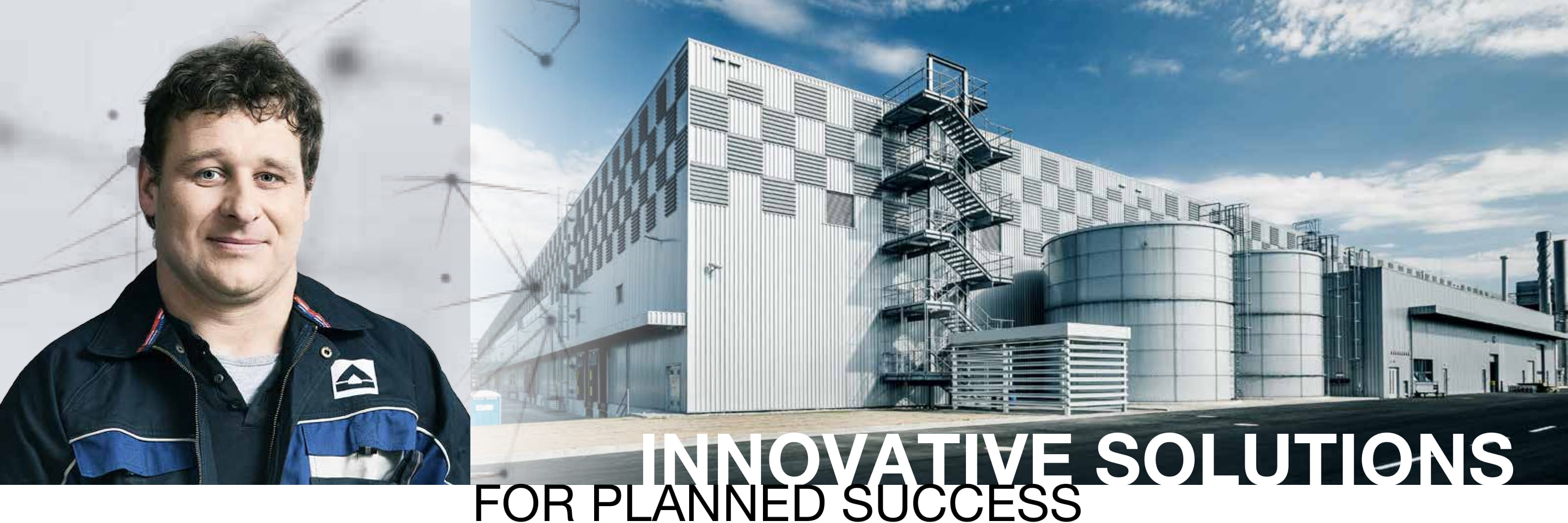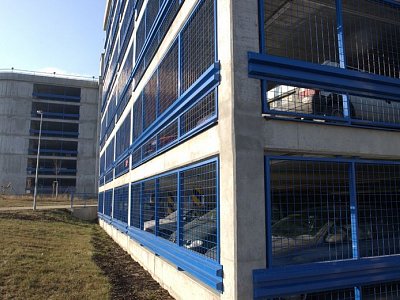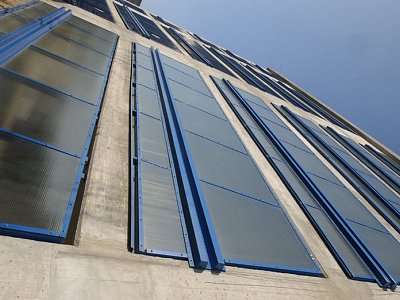Prague, Multi-storey car park Barrandov
The modern multi-storey car park was built in Barrandov as replacement for ground-level parking capacities that were cancelled as they stood in the way of a tramline construction.
Information:
| Location: | Prague, Barrandov |
|---|---|
| Investor: | Subterra, a. s. |
| Realization: | HOCHTIEF VSB division 8 |
| Type: | Mass garages |
| Construction time: | 09/2001 - 04/2002 |
| Main indicators: | Multi-storey car park for 370 passenger cars. The total built-up area of the garages is 1.9 thousand sq.m, enclosed area 31 thousand cu.m; 4.7 thousand cu.m of concrete, 500 tonnes of reinforcement and more than 22 thousand sq.m of formwork were consumed. |
| Description: | The design of the car park had to be adapted to the shape of a relatively narrow plot of land, to the neighbourhood of the future tram stop, to the location of the underground services and, last but not least, also to the proportions of the buildings of adjoining development. Therefore, the new parking capacity was divided into two separate buildings slightly different in shape, but in fact of the same structural design and architectural concept. Both buildings are founded on bored piles that bear the foundation slab. The sub-structure including the lift shafts is, up to the level of the first aboveground storey, built of impermeable concrete with sealing of construction joints, i.e. by our well-established technology without external damp-proofing. Both buildings have five aboveground storeys and a trafficable roof each. There are cast-in-situ reinforced concrete skeletons combined with reinforced concrete load-bearing walls and supporting posts. In the places where cladding is not formed by bearing reinforced concrete structure, steel frames with armoured glass and grates are inlaid into the facade. Individual storeys are always divided into two parts with their height shifted by a half of their construction depth and connected with the ramps. For walking persons, each building includes two passenger lifts and two staircases. Vertical areas for the staircases optically appear on the forefront of the mass of the buildings and constitute a significant architectural element. A considerable part of pouring of concrete proceeded in the winter period. However, the construction supervision was well prepared for the pouring of concrete at low temperatures. A detailed plan of winter measures was prepared for four different zones of the current low temperatures. The practices suitable for low temperatures were applied, the temperature of supplied concrete mixture was checked and above all, polystyrene mats and mattresses consistently protected the concrete. This resulted not only in continuous construction and in general a good quality of concrete structures, but also in high-quality construction surfaces that predominantly meet general requirements for face concrete. As a whole, the car park is designed for up-to-date operation with permanent service. The entrance and exit are equipped with barriers, an identification system and an information panel stating the number of vacant and occupied parking places. In addition, the whole space is monitored by several tens of cameras. The garages are not heated, but for assurance of safety operation, the ramps have in-built electrical heating activated by sensors once temperature of the ramp surface drops below a hazardous limit. In a similar way, the concentration of exhaust gases in the environment is automatically checked, and ventilation is automatically switched on, if necessary. Among other interesting items we can mention automatic switching on and off of interior lighting, electrically heated roof gullies, high-quality sanitary facilities etc. The car park was built by the team of site manager Martin Beneš in less than 9 months. Although it has only been in service for six months, it is evident that that the level of their work and sub-deliveries produced a high-quality work that does the company credit. The total favourable impression is also enhanced by the soft and hard landscaping in the vicinity of both buildings which further contributes to integration of the car park into the existing urban development. |



